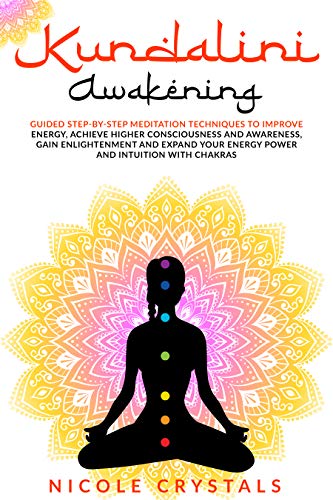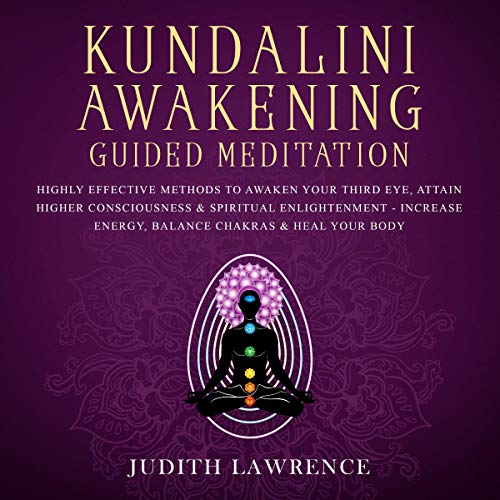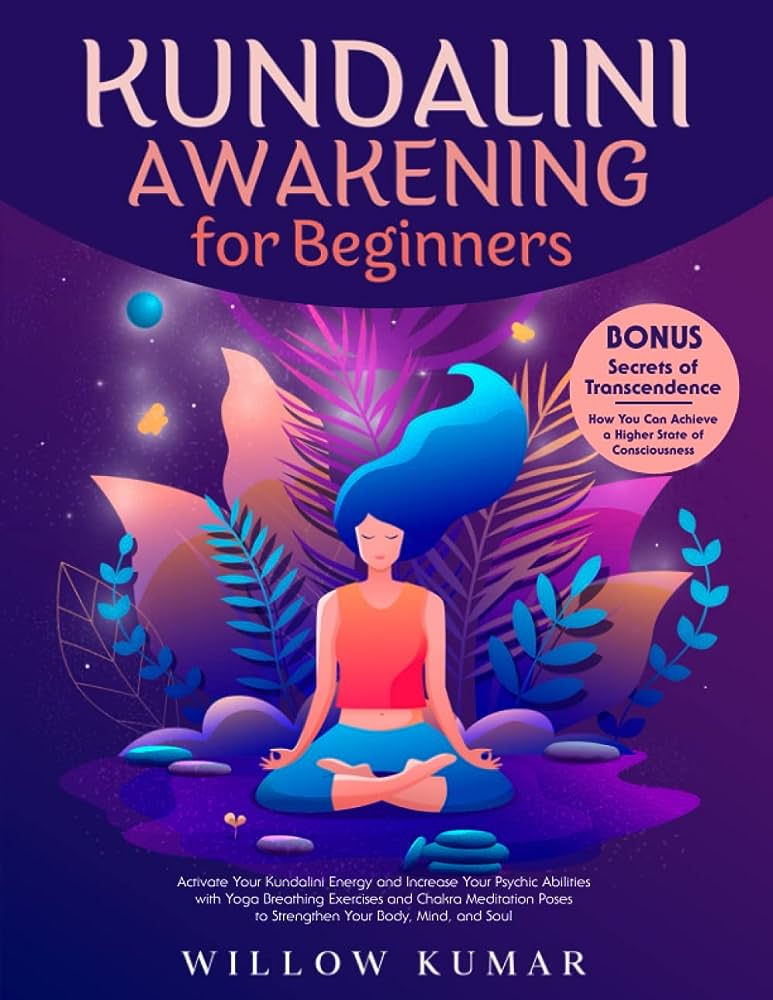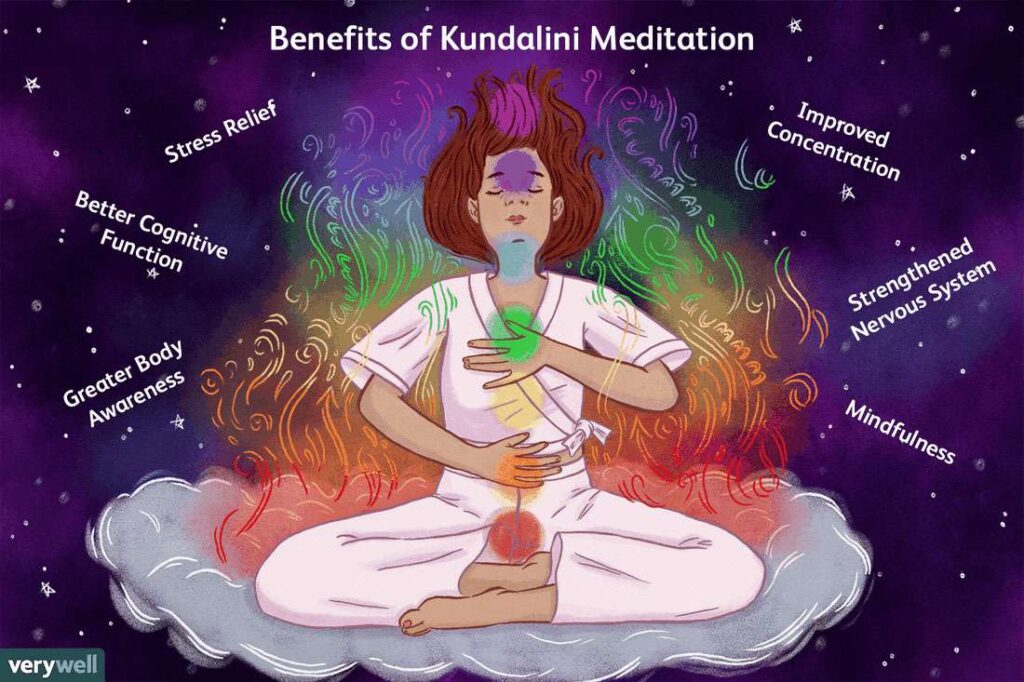
What is Kundalini Meditation?
Definition of Kundalini meditation
Kundalini meditation is a specific type of meditation that aims to awaken the potential for awareness in individuals. It involves various techniques, including deep breathing, hand movements, mantras, and physical movements. Originating from Hindu religious texts, Kundalini practices have been around for thousands of years. Yogi Bhajan introduced Kundalini yoga to the Western world in 1968, bringing this transformative practice to people outside of traditional spiritual teachings.
The goal of Kundalini meditation
The ultimate goal of Kundalini meditation is to activate the dormant energy located at the base of the spine, known as the Kundalini energy. By awakening this energy, practitioners aim to experience heightened states of consciousness, expanded awareness, and a deeper connection with their true selves.
Techniques involved in Kundalini meditation
Kundalini meditation incorporates a variety of techniques to awaken and direct the Kundalini energy. These techniques may include deep breathing exercises like alternate nostril breathing, hand movements called mudras, chanting and repeating mantras, and performing physical movements or yoga poses. These practices help to balance the energy within the body and activate the Kundalini energy.
Kundalini meditation can be a powerful tool for personal growth and self-realization. Its benefits include increased mindfulness, improved communication, inspiration, and a clearer sense of self. Research also suggests that Kundalini yoga, which often includes Kundalini meditation, may have additional benefits such as reduced stress, reduced anxiety, and improved cognitive function.
While there are no known long-term negative effects of Kundalini meditation, beginners may experience dizziness or lightheadedness as they adjust to the practice. To start, it is recommended to begin with shorter meditation sessions and gradually increase the length as you become more comfortable. It is important to take breaks when needed and stay hydrated during Kundalini meditation practice.

This image is property of Amazon.com.
## Origins of Kundalini Meditation
Kundalini practices in Hinduism
Kundalini meditation has its origins in Hinduism, with its roots traced back to ancient religious texts. These texts describe the awakening of Kundalini energy, which is believed to lie dormant at the base of the spine. Through specific techniques such as deep breathing, hand movements, mantras, and physical movements, practitioners aim to activate and raise this powerful energy within themselves. Kundalini practices have been passed down through generations, offering individuals a pathway to spiritual enlightenment and self-realization.
Introduction of Kundalini yoga to the Western world
In 1968, Yogi Bhajan brought Kundalini yoga to the Western world, making it more accessible to a wider audience. Yogi Bhajan’s teachings emphasized the integration of Kundalini meditation and physical yoga postures to achieve a harmonious and balanced state of being. This introduction exposed people outside of traditional spiritual teachings to the transformative power of Kundalini practices.
By incorporating Kundalini meditation into their daily routines, individuals have reported numerous benefits. These include increased mindfulness, improved communication skills, inspiration, and a clearer sense of self. Additionally, research suggests that Kundalini yoga, which often includes Kundalini meditation, may have further advantages such as reduced stress, anxiety, and enhanced cognitive function.
While Kundalini meditation is generally safe, beginners may experience dizziness or lightheadedness initially due to the deep breathing exercises involved. It is advisable to start with shorter meditation sessions and gradually increase the length as you become more comfortable. Remember to take breaks and stay hydrated during your practice to ensure your well-being.
Benefits of Kundalini Meditation
Kundalini meditation offers a range of benefits that can enhance your overall well-being. Firstly, this practice increases mindfulness and self-awareness. By channeling your focus on deep breathing, hand movements, mantras, and physical movements, you become more present in the moment, leading to a heightened sense of awareness. This increased mindfulness can help you navigate life with greater clarity and intention.
Additionally, Kundalini meditation improves communication and inspiration. As you delve into a deeper state of consciousness, you become more attuned to your inner voice. This enhanced self-expression and creativity can enhance your interpersonal communication and ignite your artistic and intuitive capacities.
Moreover, Kundalini meditation cultivates a clearer sense of self. Through this practice, you gain a deeper understanding of your emotions, desires, and purpose. This self-discovery can empower you to make conscious choices aligned with your true self.
Furthermore, research suggests that Kundalini yoga, which often includes Kundalini meditation, can have several scientifically backed benefits. Studies have shown that this practice may reduce stress and anxiety levels while improving cognitive function.
It is worth noting that while Kundalini meditation has no known long-term negative effects, beginners may experience dizziness or lightheadedness initially. Therefore, it is recommended to begin with shorter meditation sessions and gradually increase the duration as you become more comfortable.
Remember to take breaks and stay hydrated during your practice, as Kundalini meditation involves deep breathing exercises. Embrace the potential within you and explore the profound benefits of Kundalini meditation.
Getting Started with Kundalini Meditation
Kundalini meditation is a powerful practice that can help you awaken your awareness and tap into your potential. If you are new to this form of meditation, it is important to approach it with patience and an open mind. Here are some recommendations to help you get started on your Kundalini meditation journey.
Starting with shorter meditation sessions
When beginning Kundalini meditation, it is advisable to start with shorter sessions. This allows your mind and body to gradually adjust to the practice. Aim for about 10-15 minutes initially, and as you become more comfortable, you can progressively increase the duration.
Gradually increasing meditation duration
As you gain more experience and confidence in your Kundalini meditation practice, you can gradually extend the duration of your sessions. However, it is crucial to listen to your body and avoid pushing yourself too hard. Start by adding a few minutes to your meditation time each week until you reach your desired duration.
Proper breathing techniques
Breathing plays a vital role in Kundalini meditation. Practice deep and intentional breathing to help calm your mind and connect with your inner self. Ensure that your breath is slow, steady, and synchronized with your movements or mantras, allowing the energy to flow freely throughout your body.
Importance of breaks and hydration
During your Kundalini meditation practice, it is essential to take breaks and stay hydrated. This will prevent fatigue and dizziness. Remember to listen to your body and take short breaks whenever needed. Keep a water bottle close by to keep yourself hydrated throughout the session.
By following these recommendations, you can embark on your Kundalini meditation journey with confidence and cultivate deep self-awareness in your life. So, find a quiet space, set aside some time, and let the transformative power of Kundalini meditation guide you on a path to greater mindfulness and well-being.

This image is property of Amazon.com.
## Potential Initial Effects of Kundalini Meditation
Dizziness and lightheadedness
When first embarking on the journey of Kundalini meditation, it is not uncommon to experience initial sensations such as dizziness or lightheadedness. These sensations can occur due to the deep breathing exercises involved in Kundalini practice, which may alter oxygen levels in the body. While these effects are temporary and typically fade away as your body adjusts to the practice, it is essential to manage them properly.
Managing initial discomfort
To effectively manage dizziness or lightheadedness during Kundalini meditation, it is recommended to start with shorter meditation sessions and gradually increase the length as you become more comfortable. Additionally, taking breaks and staying hydrated during practice can help alleviate these sensations. If you experience any discomfort, pause for a moment, focus on your breath, and ground yourself by placing your feet firmly on the ground.
Remember, these initial effects are generally harmless and should not discourage you from continuing your Kundalini meditation journey. As you become more acquainted with the practice, these sensations will likely diminish, allowing you to fully experience the benefits of awakening your awareness. So, embrace the process, be patient with yourself, and enjoy the transformative journey of Kundalini meditation.

This image is property of Amazon.com.
## Creating a Safe and Comfortable Environment
Choosing a quiet and peaceful space
To fully immerse yourself in Kundalini meditation, it’s important to select a space where you can focus without distractions. Find a room or corner of your home that offers tranquility and solitude. Consider using noise-canceling headphones or playing soft, calming music to drown out any external sounds that may disrupt your practice.
Creating a conducive atmosphere
Enhance your Kundalini meditation experience by creating an atmosphere that promotes relaxation and introspection. Dim the lights or light some candles to create a soothing ambiance. You may also want to incorporate aromatherapy using essential oils such as lavender or sandalwood, known for their calming properties. By engaging multiple senses, you can deepen your connection to the present moment and enhance your overall experience.
Using props and cushions for comfort
Support your body during meditation by using props and cushions. Sit on a comfortable meditation cushion or fold a blanket to create a makeshift bolster. This helps maintain a proper posture, preventing discomfort and allowing you to fully concentrate on your practice. Additionally, using a soft shawl or blanket can help keep you warm, as body temperature may slightly drop during meditation. Remember, being physically at ease contributes to a more profound and rewarding Kundalini meditation experience.

This image is property of www.verywellmind.com.
## Common Kundalini Meditation Techniques
Kundalini meditation encompasses various techniques that help awaken your inner awareness and tap into your hidden potential. These techniques have been practiced for centuries and have gained popularity due to their accessibility and numerous benefits.
Deep Breathing Exercises
Deep breathing is an integral part of Kundalini meditation, as it helps to calm the mind and increase focus. You are encouraged to take slow, deep breaths, allowing the breath to fully fill your lungs. With each exhale, release any tension or negative energy within you. This technique promotes relaxation and prepares you for a deeper meditative state.
Hand Movements and Mudras
In Kundalini meditation, specific hand movements called mudras are employed to direct and channel energy throughout the body. These mudras involve various hand positions and gestures, each with its own significance. As you perform these movements, you become more connected to the energy flowing within you, enhancing your overall meditation experience.
Chanting Mantras
Another technique used in Kundalini meditation is mantra chanting. Mantras are powerful sounds or phrases that are repeated either silently or out loud. They help to focus the mind, uplift the spirit, and create a sense of inner harmony. By chanting mantras, you cultivate a deep connection to your inner self and promote a sense of peace and tranquility.
Physical Movements and Yoga Poses
Kundalini meditation often incorporates gentle physical movements and yoga poses. These practices help to energize the body, remove stagnant energy, and create balance within. Through specific postures and movements, you can activate and stimulate different energy centers in your body, allowing the Kundalini energy to rise.
Remember, it’s important to start slowly and gradually increase the duration of your meditation practice. Take breaks as needed and stay hydrated. With regular practice, Kundalini meditation can bring about profound changes in your life, such as increased mindfulness, improved communication, and a clearer sense of self.
Exploring Advanced Kundalini Meditation
Progressing in Kundalini meditation practice
As you become more familiar with the basics of Kundalini meditation, you may find yourself drawn to explore more advanced techniques. It is important to progress at your own pace and to listen to your body’s signals. Gradually increase the duration of your meditation sessions, allowing yourself the opportunity to delve deeper into the practice. Remember to be patient with yourself and trust the process, as progress may take time.
Exploring more complex techniques
Once you feel ready, you can begin to incorporate more complex techniques into your Kundalini meditation practice. These may include advanced breathing exercises, more intricate hand movements, or extended periods of mantra repetition. It is essential to approach these techniques with curiosity and an open mind, but also with caution. If any physical or emotional discomfort arises, honor your boundaries and modify the practice accordingly.
Seeking guidance from experienced practitioners
To further enhance your understanding and deepen your practice of Kundalini meditation, consider seeking guidance from experienced practitioners. These individuals can offer valuable insights, personalized advice, and may even introduce you to new techniques or variations. Joining a Kundalini meditation class or workshop can provide a supportive community and foster connections with like-minded individuals who share a similar spiritual journey.
Remember, exploring advanced Kundalini meditation techniques is a personal journey that requires patience, consistency, and self-care. Trust in your innate wisdom and embrace the transformative potential of this ancient practice.

This image is property of i0.wp.com.
## Precautions and Considerations for Kundalini Meditation
Consulting with a healthcare professional
Before embarking on any new meditation practice, it is advisable to consult with a healthcare professional. This is especially important if you have any pre-existing medical conditions, such as cardiovascular issues or respiratory problems. Your healthcare provider will be able to provide personalized advice and guidance, ensuring that Kundalini meditation is safe for you.
Modifying techniques for physical limitations
Kundalini meditation involves various physical movements and postures. However, if you have physical limitations or injuries, it is important to modify the techniques accordingly. You can work with an experienced teacher or instructor to find alternative movements that are suitable for your unique needs. Remember, the goal is to cultivate awareness and inner stillness, so adapting the techniques to accommodate your physical limitations should not hinder your progress.
Importance of listening to the body
During Kundalini meditation, it is crucial to listen to your body and respect its limits. As you engage in the various techniques, pay attention to any discomfort or pain. If you experience any unusual sensations, such as numbness or tingling, it may be a sign to ease off or modify the practice. Pushing through discomfort can lead to injury, so prioritize the wellbeing of your body and make adjustments as needed.
Being aware of individual comfort levels
Everyone is different, and what feels comfortable or effective for one person may not be the same for another. It is important to honor your individual comfort levels when practicing Kundalini meditation. If certain techniques or postures feel too challenging or overwhelming, don’t hesitate to modify or explore alternatives. Kundalini meditation is a personal journey, and finding what works best for you is key to a fulfilling practice.
Remember, Kundalini meditation can be a powerful and transformative practice when approached with care and mindfulness. By taking precautions and listening to your body, you can create a safe and enjoyable experience that nurtures your awareness and wellbeing.
Conclusion
Recap of Kundalini meditation
In summary, Kundalini meditation is a powerful practice that aims to awaken your potential for awareness. By incorporating techniques such as deep breathing, hand movements, mantras, and physical movements, you can enhance mindfulness, improve communication, find inspiration, and gain a clearer sense of self. This ancient practice, rooted in Hindu religious texts, was introduced to the Western world by Yogi Bhajan in 1968, making it accessible beyond traditional spiritual teachings.
Encouragement to explore and experience its benefits
If you’re seeking a transformative meditation practice, Kundalini meditation is worth exploring. Its reported benefits, backed by research, include reduced stress, anxiety, and improved cognitive function. By committing to regular practice, you can unlock the potential for a more awakened and fulfilling life.
Reinforcement of practicing within personal abilities
It is important to remember that Kundalini meditation should be practiced within your personal abilities. If you’re new to the practice, you may experience dizziness or lightheadedness initially. Start with shorter meditation sessions and gradually increase the length as you become more comfortable. Take breaks, stay hydrated, and listen to your body during your practice.
Remember, Kundalini meditation is a journey that unfolds at its own pace. Embrace the potential for awakening and explore the benefits of this unique practice for yourself.
